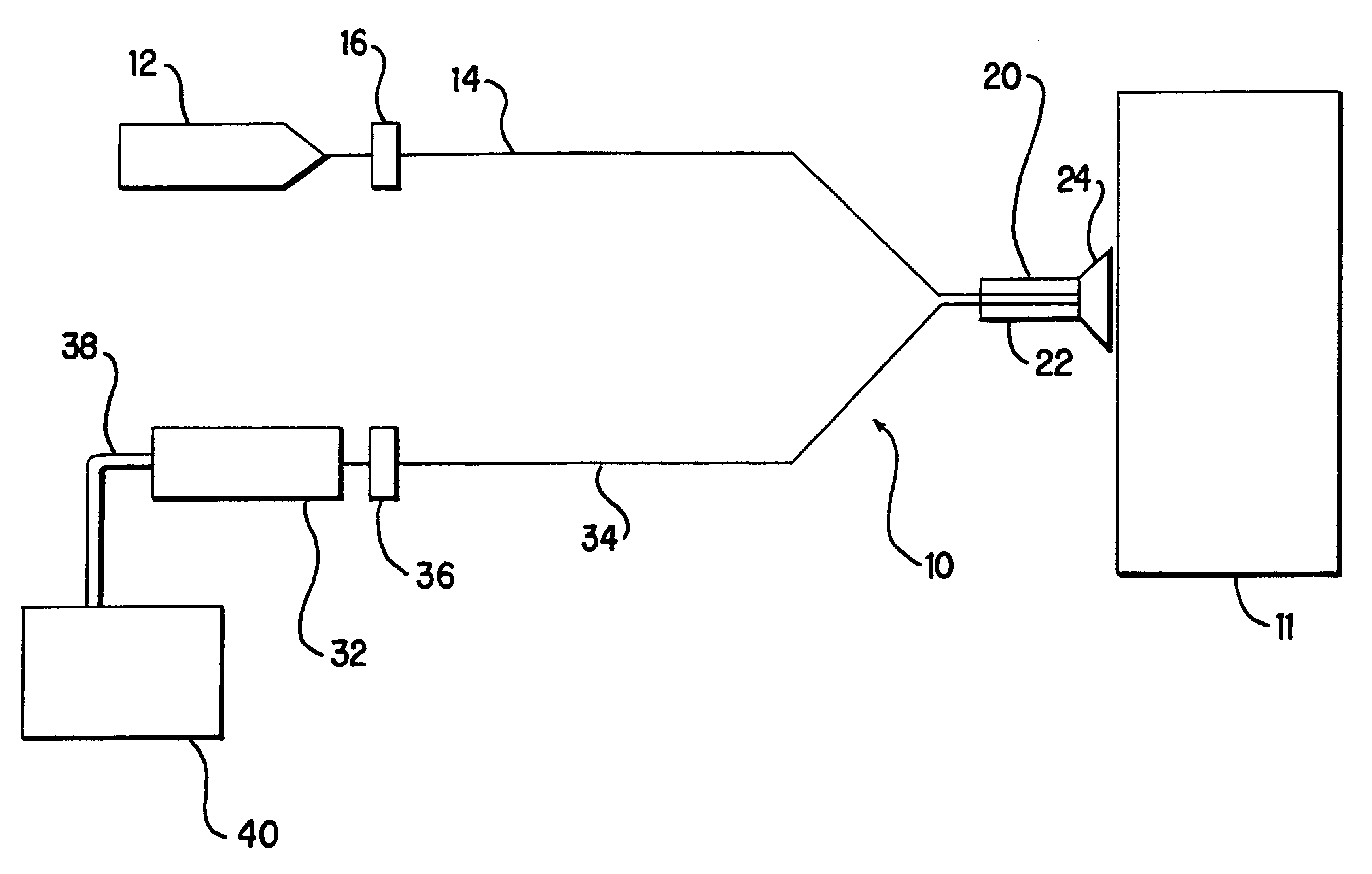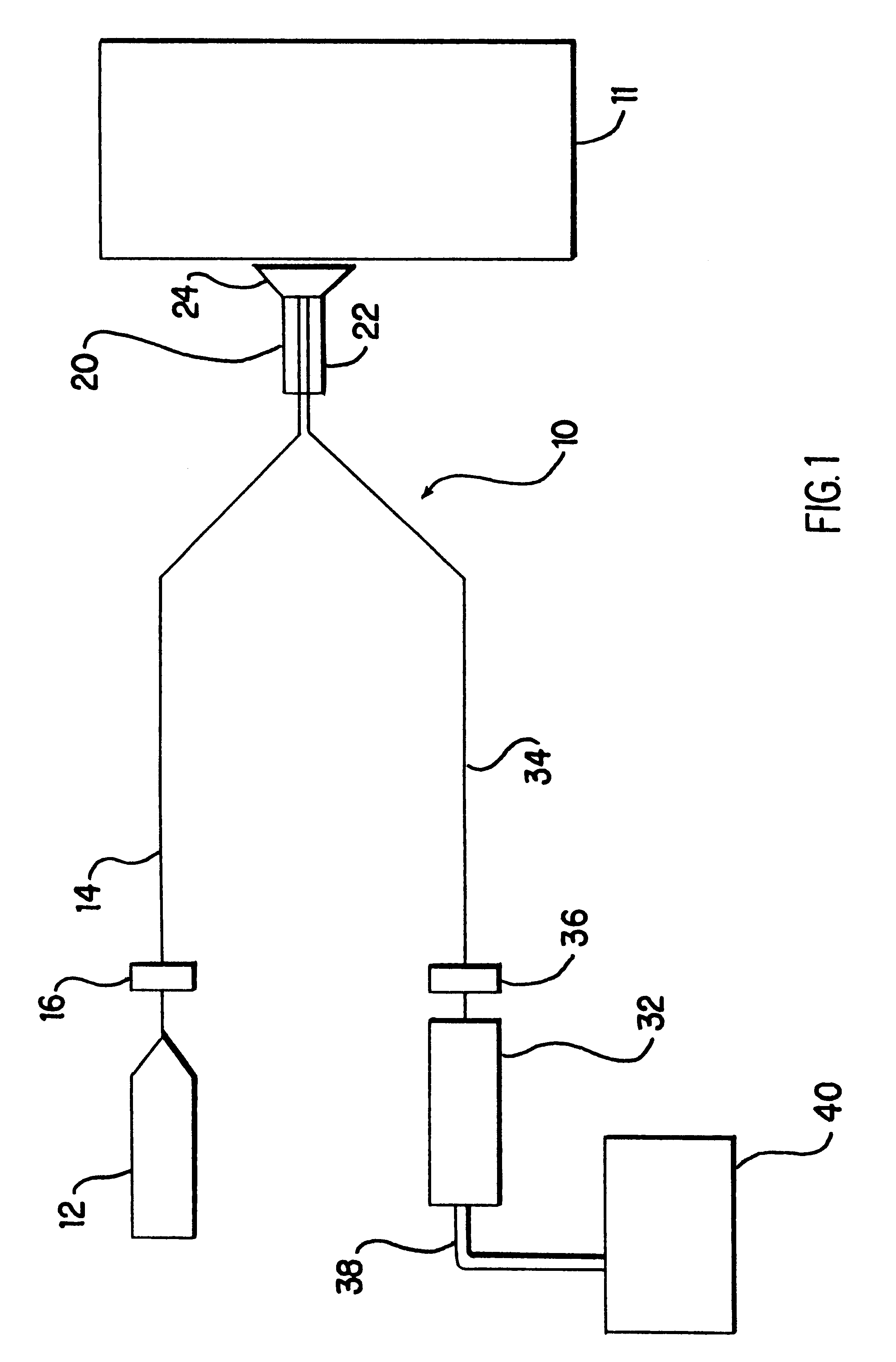Method of determining authenticity of a packaged product
a technology of packaging products and authenticity, applied in the direction of luminescent dosimeters, optical radiation measurement, fluorescence/phosphorescence, etc., can solve the problems of micro-replicated patterns that can involve additional costs, slow inspection types are often laborious and laborious,
- Summary
- Abstract
- Description
- Claims
- Application Information
AI Technical Summary
Benefits of technology
Problems solved by technology
Method used
Image
Examples
examples 1-8
A series of three-layer heat shrinkable films were made by coextrusion followed by biaxial orientation according to procedures known in the art. Each of the films had outer layers made from a blend of ethylene / vinyl acetate copolymer (EVA), LDPE, and LLDPE, while the inner layer was made from LLDPE.
Each time that a film was made, a different combination of three fluorescent dyes was mixed into the EVA / LDPE / LLDPE blend from which one of the outer layers was made. The dyes used were
A) Uvitex.TM. optical brightener (Ciba-Geigy Corp.; Greensboro, N.C.),
B) Lumogen.TM. red dye, and
C) decacyclene.
The amounts of each dye used in the various films was as shown in Table 1, immediately below.
Using standard spectroscopic equipment, several fluorescence spectra of each film sample were taken and electronically stored so as to provide a standard for each film. Thereafter, the films were tested in a random fashion and each could be identified based on comparisons against the stored spectra.
This sh...
example 9
A standard piece of paperboard was coated with Uvitex.TM. optical brightener and wrapped in a thermoplastic film which included another fluorescent material. This sample was spectroscopically analyzed in the manner described with respect to Examples 1-8. The spectrum of the film-paperboard combination was able to be matched to a reference spectrum of a film which included both the Uvitex.TM. optical brightener and the same other fluorescent material.
The foregoing shows that the process of the present invention can be effective even where one or more of the fluorescent materials is incorporated into a material (e.g., the product) underlying a thermoplastic packaging material (e.g., a packaging film) incorporating one or more other fluorescent materials.
PUM
| Property | Measurement | Unit |
|---|---|---|
| wavelength range | aaaaa | aaaaa |
| wavelength range | aaaaa | aaaaa |
| wavelengths | aaaaa | aaaaa |
Abstract
Description
Claims
Application Information
 Login to View More
Login to View More - R&D
- Intellectual Property
- Life Sciences
- Materials
- Tech Scout
- Unparalleled Data Quality
- Higher Quality Content
- 60% Fewer Hallucinations
Browse by: Latest US Patents, China's latest patents, Technical Efficacy Thesaurus, Application Domain, Technology Topic, Popular Technical Reports.
© 2025 PatSnap. All rights reserved.Legal|Privacy policy|Modern Slavery Act Transparency Statement|Sitemap|About US| Contact US: help@patsnap.com


